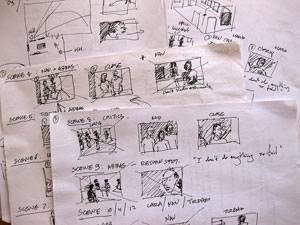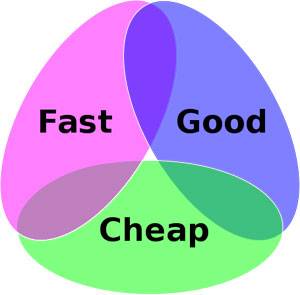Article by Irina Papuc An easy guide on how landscape architects can go about hiring software engineers. If there’s one thing we know about landscape architects, it’s that their brains are always ticking over with new ideas, not just about spatial design or urban rejuvenation schemes but ways to work better, live better and be better and in today’s tech savvy world this can often lead to an idea that needs software development such as an app. or computer program. So, You’ve come up with a great app idea. Maybe the latest plant identification app. or perhaps you’ve developed an idea for software which makes it easy for landscape architects to find potential jobs or perhaps clients, depending on where you’re coming from.

Having a great idea is the easy part. Image: By Jacob Hnri 6 – Based on File: Crystal Clear app ktip.png, CC BY-SA 3.0, Link
You’ve thought through all of its features, you know there’s people who would love it, and you know how you’re going to market it. There’s only one tiny, tiny issue: you don’t know how to develop it. When we picture an app, we often focus on what it’s going to look like rather than how we’re actually going to make it. Unfortunately, that second part is really important: if you don’t get a good developer, your app isn’t going anywhere.
Now, you may completely understand this, but if you’re a non-coder like us, you’re still stuck on a big question: where are you supposed to find a solid developer? To make your job a bit easier, we’ve pulled together our top tips for hiring freelance software engineers so that the landscape architect that is you can unleash the entrepreneur inside and bring some of those brilliant ideas to fruition.
Hiring Software Engineers
1. Sketch it out Before you go looking for a developer, make sure you have a good idea of what your app or website is going to look like. This may seem obvious, but we’ve seen plenty of people hand over assignments to developers that read something like, “Game with levels; get the ball into the goal; multiplayer.” Don’t be that person. You should have a fairly detailed plan regarding the different components of your project, and how they’re all going to fit together.

A storyboard can be a great way for you to map out your idea. Image: By Neil Cummings – Lapdogs storyboard, CC BY-SA 2.0, Link
As a landscape architect, you probably know
Photoshop, in which case use it to help you visualize your idea and illustrate it to others. You don’t need to work everything out ahead of time: there might be some parts that you can’t be quite sure about until other parts have been built, and your developer might have some helpful suggestions for making things more user-friendly.
2. Ask the pros Now, let’s not beat around the bush. Finding a good developer can be a pain, but that’s why there are so many websites that will do it for you. Using these websites as opposed to looking for one on your own is analogous to using an electric guitar tuner instead of trying to tune your guitar with your eyes and ears closed. It’s really best to give yourself that extra help. Let an expert connect you to someone who has the skills you need. There are plenty of great sites from which to choose, but our favorite is Toptal. The site can get you up and running quickly with expert developers: All of their programmers undergo a super intense verification process
(out of thousands of applicants a month, only about 3% pass). Toptal hand-matches you to a developer who meets your needs and can start work immediately, and you get a two-week trial to make sure you’re 100% satisfied with your match. If not, you don’t pay.
3. Do your homework No one’s asking you to be a developer, but you should, at least, know the basics as they relate to your project. If you’re building an iOS app, you don’t need to know about Android or Windows, but you do need to know about some common bugs, what languages your developer should know, and what’s involved in converting the app to other platforms.
4. For Long Projects: Talent If you’re hiring your developer for an extended project, you want to prioritize talent over skills. This doesn’t mean that you should take a super-talented developer who has no idea what you want them to do. Rather, if you’re picking between a good developer with all of the skills you need and a great developer with some of the skills you need, take the second option. A great developer can pick up new skills fast, but it’s going to take a lot more time for a good developer to become a great one.
5. Input = Output 
Be realistic, you can’t have everything. Image: By Cosmocatalano – Own work, CC0, link
This is a sad, sad truth in the world of business. If you pay less, you tend to get less; if you pay more, your odds of getting a good finished project are way higher. It may seem tempting to hire the developer who’s willing to work for the least money – who isn’t looking for a deal? You’re already spending money on a million other things, and you’re thinking about what you’re going to have to spend for advertising, to get your brilliant idea out there. This is bad logic. Do not take shortcuts on your developers. If you end up with an inferior project because you hired a cheap developer, it’s going to set you back weeks, which will end up costing you, even more, money. Don’t be fooled: cheap developers will end up being pretty expensive mistakes.
6. Dig Deep As with any new employee, you want to take a look at their past work to determine whether they know what they’re doing, and how they add their personal flair. Ask them to show you some of their previous projects, and be sure to get in touch with former clients. You want to hear from former clients how satisfied they were not only with the finished product but also how much they enjoyed working with your candidate. You should also make sure you develop a good sense of their problem solving and communication capabilities. All this background checking might seem like a lot of work. It is. This is another reason why using a hiring site with its own verification process is great: it takes over this extra work for you.
Hiring Software Engineers to Revolutionize Landscape Architecture
The best people to revolutionize landscape architecture are landscape architects, we understand the problems and therefore the opportunities first hand. Don’t be another person with a great idea that leads to nothing, take your idea a step further and connect with the right people to enable it. Article by Irina Papuc Return to Homepage
Published in Blog













